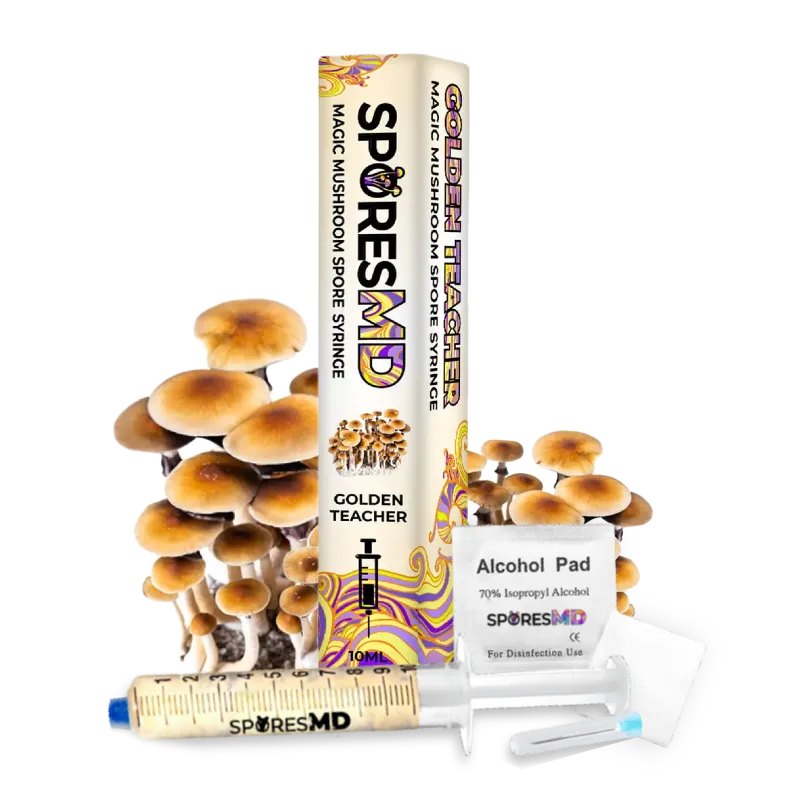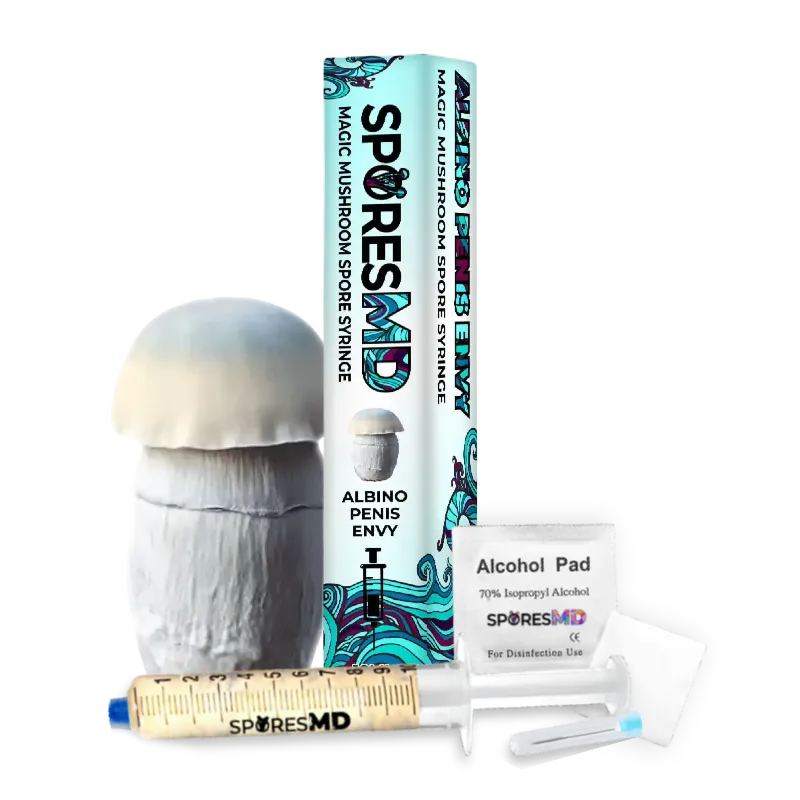Are mushroom spores dead or alive? This question puzzles many. At first glance, bacterial spores seem inert. They show no signs of life for years, lacking measurable ATP, excluding water, and consuming no oxygen. Yet, when placed in the right environment, something remarkable happens. Within an hour, these spores spring to life, generating ATP and dividing. This swift transition from dormancy to activity raises a fascinating debate about the nature of life at its most basic level.
Understanding whether spores are dead or alive isn’t just academic curiosity—it’s a glimpse into the resilience and complexity of life forms. Spores challenge our traditional views, thriving in conditions that would halt most biological processes. As you delve deeper into this topic, you’ll uncover the mechanisms that allow spores to “wake up” from their slumber, ready to grow and multiply. This exploration not only satisfies your curiosity but also enriches your knowledge of biology’s wonders.
Key Takeaways
- Spores exist in a state of dormancy, not entirely alive but capable of revival under favorable conditions, challenging traditional views of life and death.
- They possess remarkable resilience, with a tough outer layer and the ability to remain inert for years, allowing survival in extreme environments.
- The transition from dormancy to activation in spores is a complex process involving environmental signal detection and metabolic awakening.
- Spores’ ability to withstand harsh conditions has significant implications for the search for extraterrestrial life and advancements in healthcare and space exploration.
- Testing for spore viability involves a variety of techniques including germination tests and fluorescence microscopy, highlighting their potential for life.
- In ecosystems, spores play critical roles in decomposition and nutrient cycling, supporting plant growth and contributing to ecological balance.
The Mystery of Spores: Dead or Alive?
Diving deep into the heart of microbiology, the topic of spores straddles the line between life and seeming death. Despite their microscopic size and inert appearance, these entities harbor a secret vitality, challenging the traditional binaries of life and death.
Exploring Spore Biology
Spores, the enduring structures produced by some bacteria, fungi, and plants, are masters of survival. Understanding their biology isn’t just an academic pursuit—it’s a journey into one of nature’s most fascinating survival strategies.
- Dormancy: Spores can remain dormant for years, waiting for the right environmental cues to awaken.
- Protection: Their tough outer layers protect them against extreme conditions like heat, radiation, and chemicals.
- Revival: Upon encountering favorable conditions, spores can revive, initiating metabolic processes and cell division.
The Viability Question
Are spores dead or alive? This question isn’t just philosophical; it has practical implications in fields ranging from space exploration to medicine.
- Viability Tests: Techniques such as culture media exposure reveal whether spores can grow, indicating life.
- Past vs. Present: Distinguishing between dormant (but alive) spores from past environments and those actively growing presents a challenge.
- Implications: The ability of spores to “come back to life” underscores their potential impact on health and planetary protection efforts.
Spores embody a unique blend of dormancy and vitality, challenging our perceptions of life and death. Their ability to withstand extreme conditions and spring back to life under the right circumstances highlights the resilience and complexity of these microscopic entities.
Understanding Spore Dormancy
Spore dormancy is a fascinating survival mechanism that allows these microscopic entities to withstand extreme conditions. Delving into what triggers dormancy and the process of activation can shed light on their resilience and potential applications in various fields, including space exploration and medicine.
What Triggers Dormancy in Spores?
Dormancy in spores is typically triggered by unfavorable environmental conditions. Such conditions may include:
- Lack of adequate nutrients
- Extreme temperatures
- Insufficient moisture
- Excessive radiation exposure
These triggers initiate a complex biochemical process that prepares the spore to enter a state of suspended animation, where metabolic activities are reduced to the bare minimum. This survival strategy ensures that spores can endure until conditions improve.
From Dormancy to Activation
Spores remain dormant until they detect signals indicating that environmental conditions have become favorable for growth. The transition from dormancy to activation involves several key steps:
- Signal Detection: Spores use a mechanism known as integrate-and-fire, based on fluxes of potassium ions, to assess their environment.
- Accumulation of Signals: Spores sum consecutive favorable signals before deciding to exit dormancy.
- Release of Stored Potassium: In response to each small input, spores release some of their stored potassium, aiding the activation process.
This process ensures that spores do not exit dormancy prematurely, avoiding potentially lethal environments. Understanding this mechanism provides insights into their exceptional resilience and the possibilities of harnessing their capabilities for medical and exploratory purposes.
By understanding the science behind spore dormancy and activation, we not only gain insight into their survival strategies but also open up avenues for advancing human knowledge and capabilities in healthcare and space exploration.
The Life Cycle of Spores
Understanding the life cycle of spores sheds light on the crucial question – are spores dead or alive? Spores, intriguing in their resilience, navigate through stages of dormancy and activation, showcasing a life cycle that underscores their adaptability and survival strategies. Let’s delve into how spores compare to seeds and explore the mechanisms behind spore dispersal and germination.
How Spores Differ from Seeds
Spores and seeds serve as units of reproduction and dispersal, but they stand apart in their structure and development:
- Unicellular vs. Multicellular: Spores are unicellular and mark the beginning of a gametophyte generation. In contrast, seeds harbor a developing embryo, kicking off the multicellular sporophyte generation.
- Haploid vs. Diploid: When spores germinate, they give rise to haploid gametophytes. Seeds germinate into diploid sporophytes, representing a significant genetic difference.
- Survival Strategy: Spores can remain dormant under unfavorable conditions, activating only when the environment becomes conducive. Seeds, however, have a developing life form within, making them more vulnerable.
Spore Dispersal and Germination
Spore dispersal and germination are pivotal to the life cycle of spores, ensuring their survival and propagation across various environments:
- Dispersal Mechanisms: Spores utilize air, water, and animals for dispersal, leveraging their lightweight and compact structure to travel vast distances. This adaptability allows spores to colonize new territories efficiently.
- Germination Process: Upon encountering favorable conditions, spores break dormancy. This transition involves detecting environmental signals and mobilizing internal resources to initiate growth into a new organism.
In comprehending the life cycle of spores, it becomes apparent that spores are neither dead nor fully alive in their dormant state. They exist in a remarkable state of potential, ready to spring to life under the right conditions. This incredible resilience and adaptability hint at the untapped potential spores hold for advancements in healthcare, space exploration, and beyond.
Spores in Extreme Environments
Spores showcase a remarkable resilience, thriving in conditions that would spell doom for most life forms. This section delves into their survival strategies and implications for the search for extraterrestrial life.
Survival Strategies of Spores
Spore’s robustness in unforgiving environments stems from their unique biological structure. When facing extreme temperatures, dryness, or nutrient scarcity, spores enter a dormant state. This dormancy is not mere inactivity but a highly regulated survival strategy. They can hibernate for years, preserving their potential to revive and grow when conditions improve. Researchers have observed bacterial spores enduring the vacuum and radiation of space, a testament to their durability.
Key survival tactics include:
- Dehydration Resistance: Spores shed most of their water content, slowing down metabolism to halt without dying.
- Protective Coating: A tough outer layer shields spores from physical and chemical hazards.
- Low-Energy State: They minimize energy consumption, extending their survival period indefinitely until favorable conditions return.
Spores and the Search for Extraterrestrial Life
The survival capabilities of spores have significant implications for the search for life beyond Earth. Their ability to endure extreme environmental stress suggests that if life exists on other planets, it might employ similar dormancy strategies. This notion has driven scientists to consider spores as potential models for extraterrestrial life forms.
Moreover, spore-forming bacteria have become subjects of astrobiological research, providing insights into the types of life that might thrive in harsh, alien worlds. The persistence of spores challenges our understanding of life’s boundaries, hinting at the possibility of microbial inhabitants in environments once deemed uninhabitable.
Agata Zupanska, a space plant biologist from the Search for Extraterrestrial Life (SETI) Institute, emphasizes dormancy’s evolutionary advantage in surviving bad environmental conditions. This underscores the potential for dormant life forms awaiting discovery on planets like Mars.
For those intrigued by the prospect of life on other planets, the study of spores offers a window into understanding survival in extreme conditions.
Spores sit at the crossroads of life and dormancy, exhibiting an unparalleled ability to withstand conditions that exceed Earth’s harshest habitats. Their study not only enriches our understanding of life’s resilience but also lights the path in the search for life in the cosmos.
Testing for Spore Viability
Understanding whether spores are dead or alive is crucial for research, healthcare, and space exploration. With spores’ unique ability to remain dormant until conditions are favorable, testing for their viability becomes a sophisticated process. Let’s delve into the techniques scientists use to assess if a spore holds the potential for life.
Are you a researcher? If so, grab your mushroom spore syringes here.
Techniques Used to Assess Spore Life
To ensure accuracy in testing spore viability, researchers employ a variety of methods, each offering insight into the fascinating world of these microscopic entities.
- Germination Tests: By exposing spores to favorable conditions and nutrients, scientists observe whether the spores can germinate and grow. This method directly shows if spores are viable and capable of life.
- Fluorescence Microscopy: Employing dyes that only light up when they interact with living cells, this technique allows researchers to visually confirm the presence of metabolic activity in spores.
- Polymerase Chain Reaction (PCR): This molecular technique detects the presence of specific DNA sequences unique to the spore-forming organism, indicating potential life.
- Direct Viability Counting: A method where spores are tagged with fluorescent dyes; those that fluoresce are considered viable because they can metabolize the dye.
- Heat Resistance Testing: Given spores’ renowned resistance to extreme conditions, observing their ability to withstand controlled high-temperature environments can infer viability.
Exploring the viability of spores isn’t just academic. It has practical applications in creating sustainable solutions for food preservation, understanding extremophiles for space exploration, and developing spore-based medications.
By employing these techniques, scientists unravel the mysteries of spore viability, further bridging the gap between the known and unknown realms of microbiology. This not only enhances our understanding of life’s resilience in extreme conditions but also paves the way for innovative applications in various fields.
The Role of Spores in Ecosystems
Understanding the role of spores in ecosystems is crucial. These microorganisms, while easily overlooked, play pivotal roles that affect not just their immediate surroundings but also have broader implications for entire ecosystems and human health.
Decomposition and Nutrient Cycling
Spores are the unsung heroes of decomposition and nutrient cycling. They break down organic matter, transforming dead plants and animals into vital nutrients that enrich the soil. This process supports plant growth, which in turn sustains wildlife and keeps ecosystems thriving.
- Decomposers: Many fungi, producing spores, act as powerful decomposers. They have enzymes that break down tough plant fibers, recycling carbon and nutrients.
- Nutrient Release: Spores from fungi and bacteria release nutrients like nitrogen and phosphorus, crucial for plant growth.
The process doesn’t just occur on a small scale in forests and fields. It’s integral to agriculture, forestry, and any natural habitat looking to sustain life.
Spores and Human Health
The interplay between spores and human health is a double-edged sword. On the positive side, certain spores are used in antibiotics and probiotics, contributing significantly to modern medicine and health. On the flip side, some spores can pose risks, causing allergies, toxic reactions, or diseases, particularly in people with compromised immune systems.
- Probiotics: Bacterial spores are used in probiotic supplements to aid digestive health.
- Pathogenic Spores: Certain spores can cause diseases like anthrax or allergies in sensitive individuals.
Understanding the environmental conditions that favor the proliferation of health-boosting versus harmful spores can help manage their impact on human health.
Leveraging the transformative power of spores in ecosystems and their complex relationship with human health requires a balanced approach. By promoting the beneficial uses while mitigating risks, societies can harness the full potential of spores. Remember, these microscopic entities, capable of both breaking down matter and building up new life forms, are essential players in the circle of life.
Conclusion
Understanding spores’ unique state, poised between life and death, provides a fascinating glimpse into nature’s resilience and adaptability. Their role in ecosystems, from decomposition to nutrient cycling, underscores their importance in sustaining life. Moreover, the dual-edged sword of spores in human health—both as allies in medicine and adversaries in disease—highlights the need for a nuanced approach to harnessing their benefits while mitigating risks. As we continue to explore the mysteries of mushroom spores, both on Earth and potentially on other planets, we unlock new possibilities for scientific breakthroughs and a deeper appreciation for the intricate web of life that connects us all.

![Are Spores Dead or Alive? Exploring the Mystery [5 Key Insights]](https://sporesmd.com/wp-content/uploads/2024/05/kX4astO7JPHI_KgEXYw91.jpeg)



